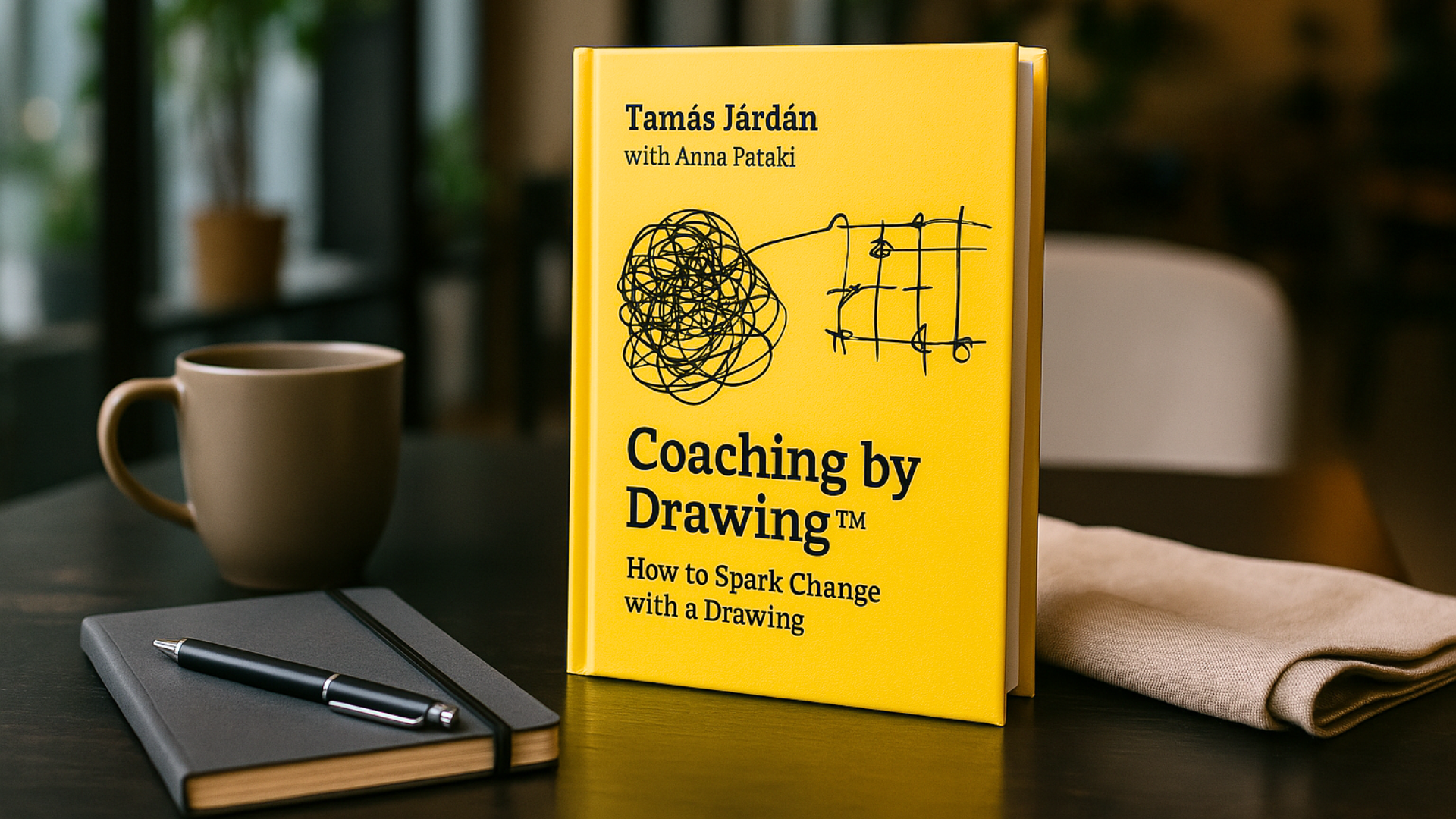Visual Metaphors That Spark Clarity and Action

Book Review: Coaching by Drawing by Tamás Járdán and Anna Pataki
A hands-on, visually engaging guide to fostering insight, creativity, and transformation through simple, powerful drawings
In Coaching by Drawing, Tamás Járdán and Anna Pataki introduce a compelling method that brings visuals into the heart of the coaching conversation. By inviting clients to use simple drawings, shapes, and metaphors, they create a dynamic way to surface insights, untangle complexity, and move toward change. This book is both practical and thoughtful, grounded in real-world experience and built around 33 visual tools that are as flexible as they are effective.
This is not a book about becoming a better artist. It is a toolkit for becoming a more connected, curious, and creative coach. Whether you are working with individuals or teams, the approach encourages fresh perspective through drawing, regardless of skill level.
What the book promises
Coaching by Drawing promises to give coaches, mentors, and facilitators a set of visual tools that make abstract thoughts more concrete. The authors explain that drawing helps externalize thinking, making it easier to organize, challenge, and act on. They promise that the tools are easy to use, adaptable, and accessible to anyone, regardless of drawing ability.
Alongside the tools, the book also offers insight into when and how to use visuals in coaching, how to introduce them respectfully into client conversations, and how to use drawing as a co-creative process that deepens understanding and forward movement.
What the book delivers
The book delivers on its promise with structure, clarity, and care. It is divided into seven themes that reflect common areas of coaching: life path and relationships, identifying resources, mapping goals, achieving goals, making decisions, sparking insight, and navigating change. Each section includes several visual tools, clearly described and accompanied by conversation tips, sample sketches, and example dialogue.
The tools range from imaginative to strategic. Some use metaphor, like the “Tree of Life” or “Bridge,” to help clients reflect on past experiences or envision future steps. Others use diagrams, timelines, or rating scales to bring clarity to goals, choices, and action planning.
Each activity includes a purpose statement, a brief explanation of when it works best, and practical steps to apply it. What stands out is the consistent balance between simplicity and depth. A stick figure, a circle, or a flow line becomes an entry point into meaningful discovery.
The authors also discuss how to introduce drawing into sessions with care. They offer guidance on gaining consent, adapting tools to different needs, and holding space for whatever emerges. Their voice remains respectful of client autonomy and aware of cultural and emotional nuance.
Style and structure
The tone throughout the book is friendly, informed, and grounded in experience. Járdán and Pataki write with a sense of warmth and clarity, offering encouragement alongside expertise. There is no unnecessary jargon, and their writing keeps the focus on people, not techniques.
The layout is practical and easy to navigate. Each tool has a consistent structure: a short overview, how and when to use it, materials needed, coaching questions, and suggestions for adaptation. The visual examples are hand-drawn and intentionally simple, reinforcing the book’s message that effectiveness does not depend on artistic ability.
The overall structure supports both quick reference and deeper study. Practitioners can move through the book sequentially or select tools based on a client’s need in the moment.
Where the book shines
The book shines in its versatility and accessibility. The tools are genuinely usable in a wide range of contexts, from individual coaching to group facilitation, from professional development to personal reflection. They offer coaches a new dimension to their practice, one that helps shift stuck thinking and engage multiple ways of knowing.
One of the book’s key strengths is its attention to client empowerment. Rather than using visuals to diagnose or direct, the authors emphasize co-creation and curiosity. Clients are invited to make meaning alongside the coach, using visual language that resonates with their own experience.
The inclusion of case examples adds clarity and depth. Real coaching moments help readers see how the tools unfold in practice, including how they can lead to powerful insights or next steps.
The simplicity of the drawings is also refreshing. There is no pressure to be skilled or precise. The focus is always on process, not polish.
Light limitations
Because the book is focused on application, it offers limited discussion of theory. Readers who want more background on visual thinking, adult learning, or psychological frameworks may wish for additional context or references. That said, the book’s strength lies in its practical nature.
Some tools may feel similar at first glance, particularly those centered on goals or decision-making. While each is distinct in its framing, it may take time and practice to discover the unique value of each approach.
A few sections may carry slight nuances in phrasing due to translation. These moments are rare and do not distract from the content, but readers familiar with coaching terminology may notice a few expressions that feel uncommon in English.
Final thoughts
Coaching by Drawing is a generous, thoughtful guide for anyone who supports others in growth, learning, or change. Tamás Járdán and Anna Pataki offer not just tools, but a shift in mindset. They show how drawing can create space for insight, unlock creative energy, and bring clarity where words alone fall short.
This book respects both the coach and the client. It is not about directing people toward answers, but about walking beside them as they discover what they already know. With its gentle tone, clear structure, and practical tools, this is a resource that invites exploration, creativity, and connection.
Highly recommended for coaches, facilitators, educators, and leaders who want to bring more presence and creativity into their conversations.